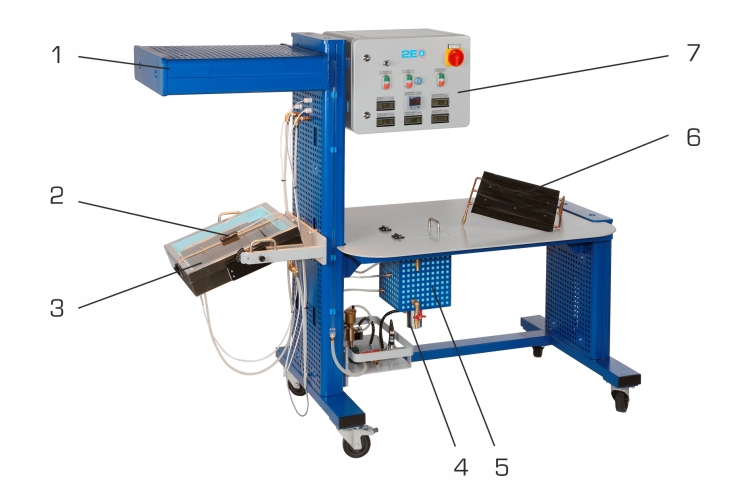Solar thermal systems convert solar energy into usable thermal energy. The efficiency achieved is of essential importance here. Effects on the absorption of the radiation and on the subsequent heat transport processes are investigated, e.g. to identify measures for the optimization of operating parameters and efficiency.
ET 202 allows to demonstrate solar thermal heating of domestic water in an illustrative manner. For this purpose, the trainer contains a fully functional model of a solar thermal system. To enable weather-independent laboratory experiments, the system is equipped with its own lighting unit. A lighting unit simulates natural solar radiation. The light is converted into heat in an absorber and transferred to a heat transfer fluid. A pump conveys the heat transfer fluid through a hot water storage tank. The heat is released to the water by an integrated heat exchanger in the tank.
In experiments different angles of incidence and illuminances are considered. The pre-installed absorber with selective coating can be replaced for a more simple blackened absorber, so as to obtain comparative measurements of collector losses. External heat consumers can be attached to the tank. With the ET 202.01 parabolic trough collector, a further collector type is available for investigations.
The temperatures in the storage tank, at the outlet and inlet of the collector and the ambient air are measured. Additionally the illuminance is measured. The measured values are displayed on the device and can simultaneously be transferred to a PC via USB. Using the PC, the data can be clearly displayed in the software provided and analysed further. The network capable software makes it possible to follow and analyse the experiments at any number of workstations via a LAN/WLAN connection to the local network.
























